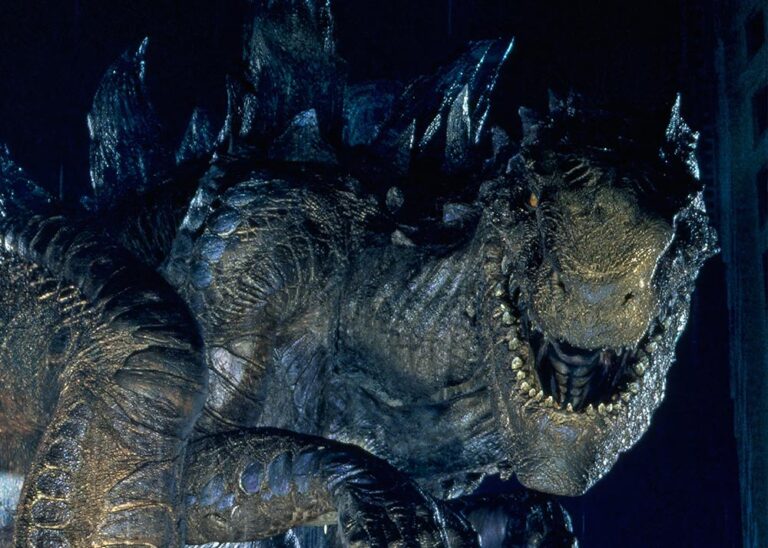
American Suit 01
ToraGoji (1998)
This design can be seen in these movies:
- Godzilla (1998)
- Godzilla Final Wars (2004)
Tatopoulos had taken a radically different approach to the classic Godzilla design
Tatopoulos’s instructions from Roland Emmerich were to forget about the original Godzilla and come at the design from a completely new angle. “My first three or four drawings were too close to the original Godzilla , I couldn’t get away from it,” Tatopoulos admits. “Roland pushed me and said to go wild. ‘We want something that will run 500 miles an hour through the streets of New York.’ That obviously dictates the design in that it can’t be like the old one, which was more slow and heavy. It’s really Roland’s pushing, telling me not to limit myself and that they would worry about selling it to the Japanese.”
– Production Designer Patrick Tatopoulos
Godzilla (1998) – American Trailer
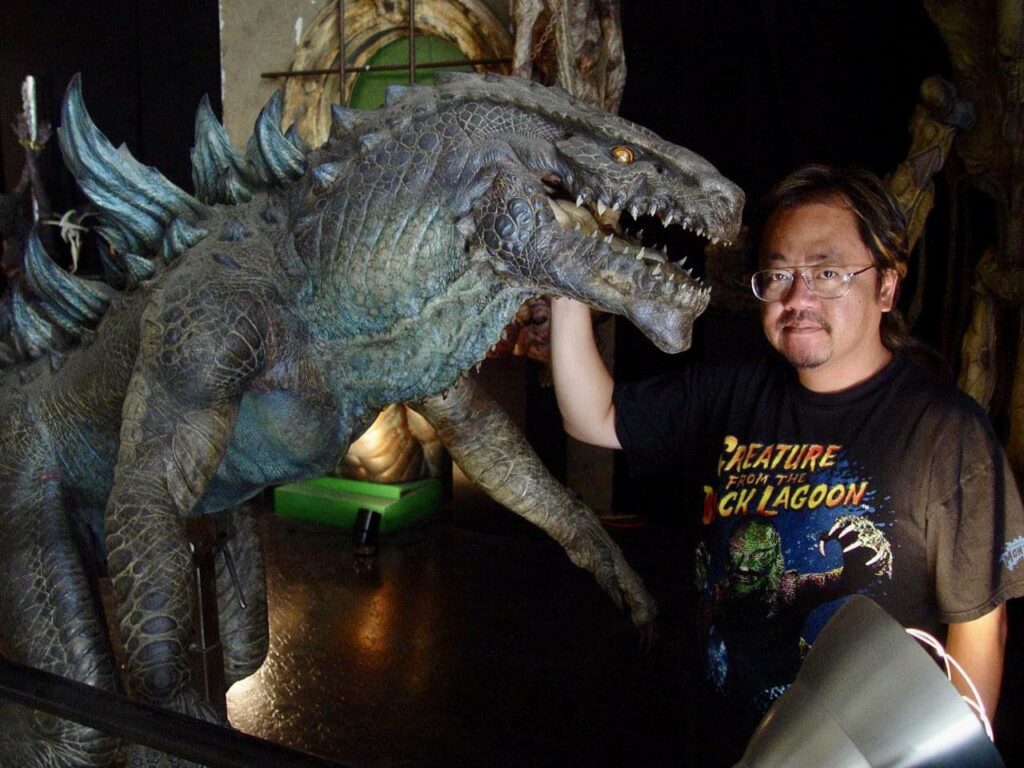
CG model scanned from 1/24 scale model
“The 1:24 scale model we built was actually the one that the CG people would scan into a computer when they were assembling the colors and the scale, to make sure that all of that matched and to set up the look of the creature in the computer at the beginning,”
– Production Designer Patrick Tatopoulos
EON Magazine
Reconstruction Godzilla: Americanizing Japan’s most famous monster
Building the Suits
I took care of building the suits, about seven baby suits plus a hydraulic baby for fast reactions...
We had a bunch of suits made in 1/24 scale for guys to wear in shots where he would burst through the streets, tc.
They also built the water head, which was built to 1/6 scale, this is the head that comes out of the water in the second trailer. We ended up building a 1/6 Godzilla that was the biggest thing we built on the show, and it turned out to be the biggest hydraulic character ever built. The head was seven feet long… [but no tail]. The reason was our tail wouldn’t fit into any studio we know of, so there was no way we could make a 1/6 tail so that was CG.
A slightly less than 1/6 scale head and tail was also constructed for an early sequence in which the monster had to interact with a miniature tanker ship. The 1/6 head was built that size not for mechanics, but because the models it has to interact with have to be that big in order to look real, like a car and so on. Any smaller and it wouldn’t work. You don’t need to go that crazy in general, but we needed that head to do tight shots and action shots with models.
Unique Features of this design
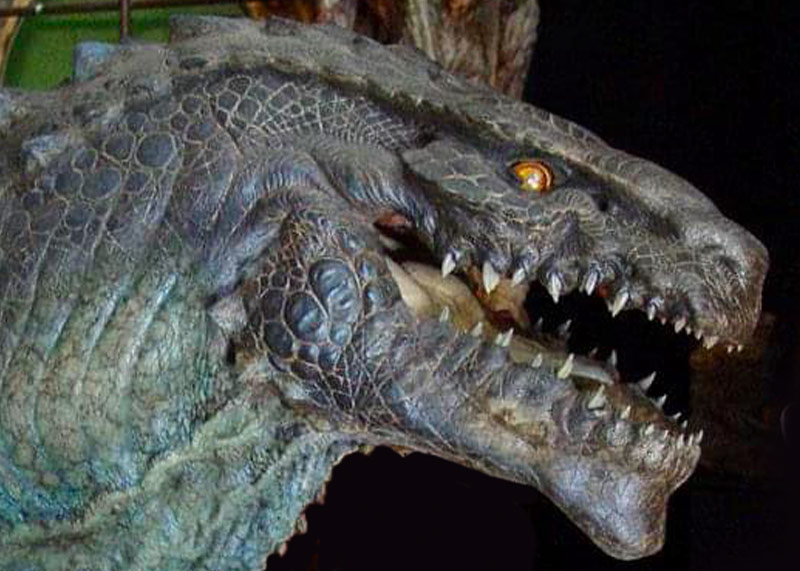
Head and Mouth
ToraGoji has a notably enormous underbite with a huge chin, and teeth that stick out of the mouth, much like crocodiles’.
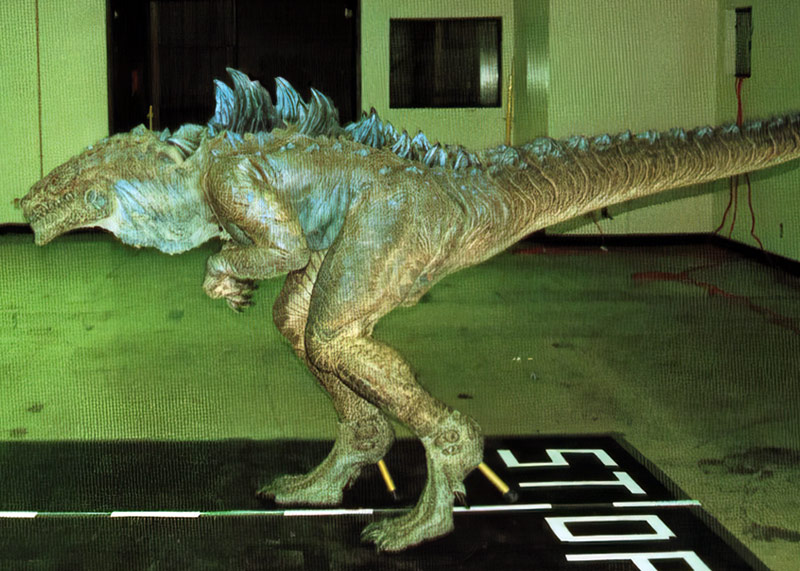
Sleek and Slender
ToraGoji is a very drastic redesign for Godzilla, to the point of bearing little resemblance to previous designs. The design has a stance similar to modern depictions of theropod dinosaurs, in contrast to Godzilla’s traditional upright humanoid posture.
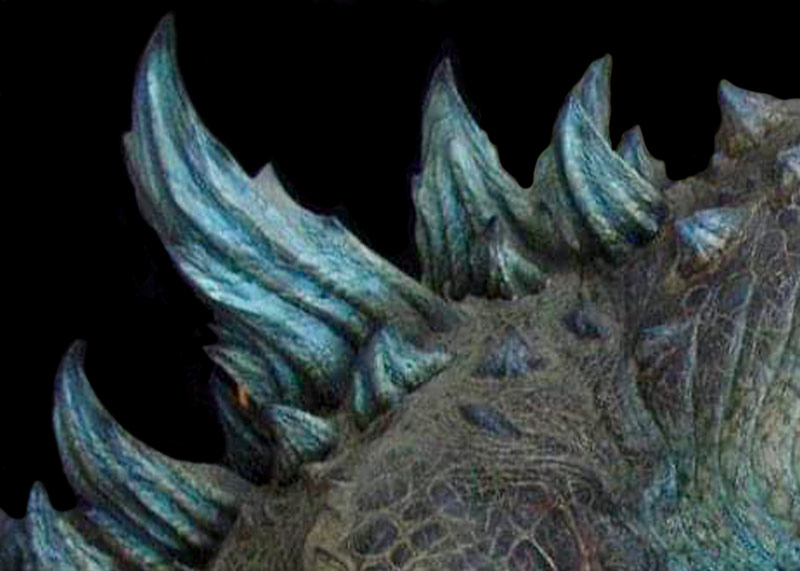
Dorsal Plates
ToraGoji has curved, spike-like dorsal plates, curving towards the front, described as looking somewhat like reversed shark fins.
SPECIAL FEATURE
Making of Godzilla 1998 (in Deutsch)
Here is an interesting 1 hour long behind the scenes feature, even if it is in Deutsch, that is fun to scrub through. It covers every aspect of the special effects of the movie so give it a watch!
ToraGoji Suit Reference Images
The screencaps were captured from the 4K Tri-Star Blu-ray and the rest of the images were found online or scanned in from magazines and books. Some of the images may have been modified to see the textures more easily.

Links
Contact
Have you already completed your own Godzilla costume and want to feature it here? Then by all means contact me and we’ll work together to add your costuming experience to this site.
